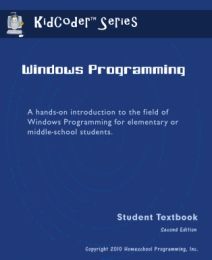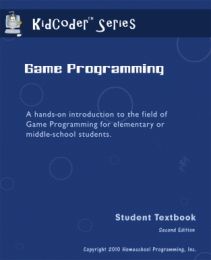- Introduction to computer hardware, software and programming history
- Using the Microsoft Visual Basic 2010 Express development environment
- Managing numeric and text data
- Making decisions about program flow
- Obtaining and validating user input
- Working with numbers and math operations
- Working with strings (text)
- Learning how to debug (find errors in) your code
- Learning how to write loops to execute sections of code many times
- Working with arrays (sets of data)
- Publishing your programs to other computers
- Putting it all together – write a simple graphical game!
Semester Two covers:
- Game design concepts
- Drawing shapes on the screen
- Responding to keyboard clicks and mouse movements
- Displaying and animating images
- Object position, movement and acceleration
- Collision detection
- Playing music and creating sound effects
- Artificial "game" intelligence
- Saving and loading games
- Game physics
- Printing screens to the printer
Honestly, I was concerned about my daughter (7th grade) working on this course. She hadn't done any computer courses before and I thought she would have to much trouble. She did struggle a little through the beginning, but once she got the hang of it she did really well and really enjoyed it. With the course we had access to the videos to help walk her through the course which I highly recommend. Each chapter leads you step by step through the process of creating the different programs. The "Your Turn" sections at the end of each chapter is a great way to see how much she understood through the chapter. Having the solutions helped her (and me) make sure we were understanding everything.
She were taken step by step through basic programming. Moving through the course slowly, a chapter a week. Each chapter is sectioned into lessons so you see when you should stop and start. She worked through very basic programming like adding a button, labels, checkboxes and adding text. She worked through chapter eight where she made a Pig Latin Translator. That was really neat. Once the Windows Programming course is finished she will start Game Programming.
In the Game Programming we will continue some of the things we learned in the first course and add onto those. We will cover things like Game Design, Screen Coordinates, User Input, Graphics and Drawings, Images and Animation, Sprites, Sound, Artificial Intelligence, Saving Games, Game Physics and Text Printing. Looking forward to getting started on the game programming.
In the Game Programming we will continue some of the things we learned in the first course and add onto those. We will cover things like Game Design, Screen Coordinates, User Input, Graphics and Drawings, Images and Animation, Sprites, Sound, Artificial Intelligence, Saving Games, Game Physics and Text Printing. Looking forward to getting started on the game programming.





No comments:
Post a Comment